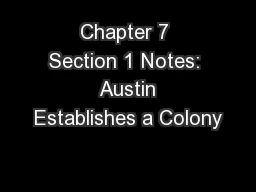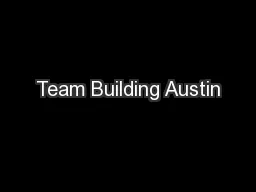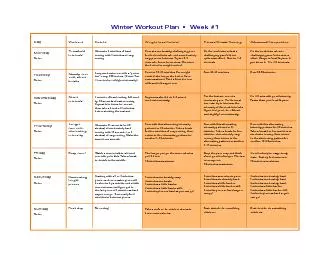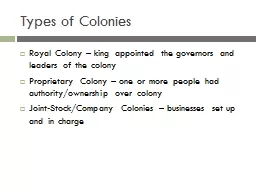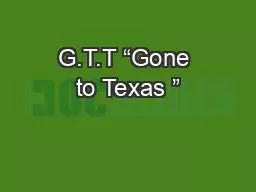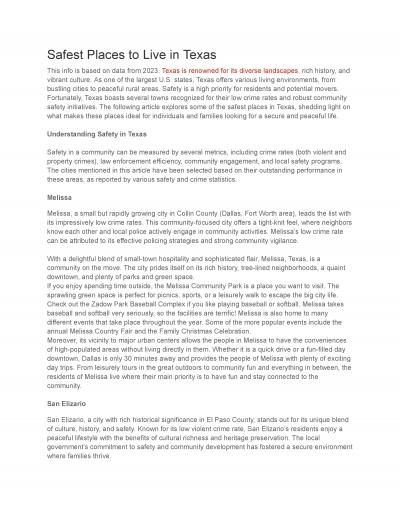PPT-Chapter 7 Section 1 Notes: Austin Establishes a Colony
Author : trish-goza | Published Date : 2016-04-08
Moses Austin Paves the Way 1 1821 Moses Austin began the Anglo American colonization of Texas 2 He knew Spanish laws 3 He lost his lead business in the depression
Presentation Embed Code
Download Presentation
Download Presentation The PPT/PDF document "Chapter 7 Section 1 Notes: Austin Estab..." is the property of its rightful owner. Permission is granted to download and print the materials on this website for personal, non-commercial use only, and to display it on your personal computer provided you do not modify the materials and that you retain all copyright notices contained in the materials. By downloading content from our website, you accept the terms of this agreement.
Chapter 7 Section 1 Notes: Austin Establishes a Colony: Transcript
Download Rules Of Document
"Chapter 7 Section 1 Notes: Austin Establishes a Colony"The content belongs to its owner. You may download and print it for personal use, without modification, and keep all copyright notices. By downloading, you agree to these terms.
Related Documents

